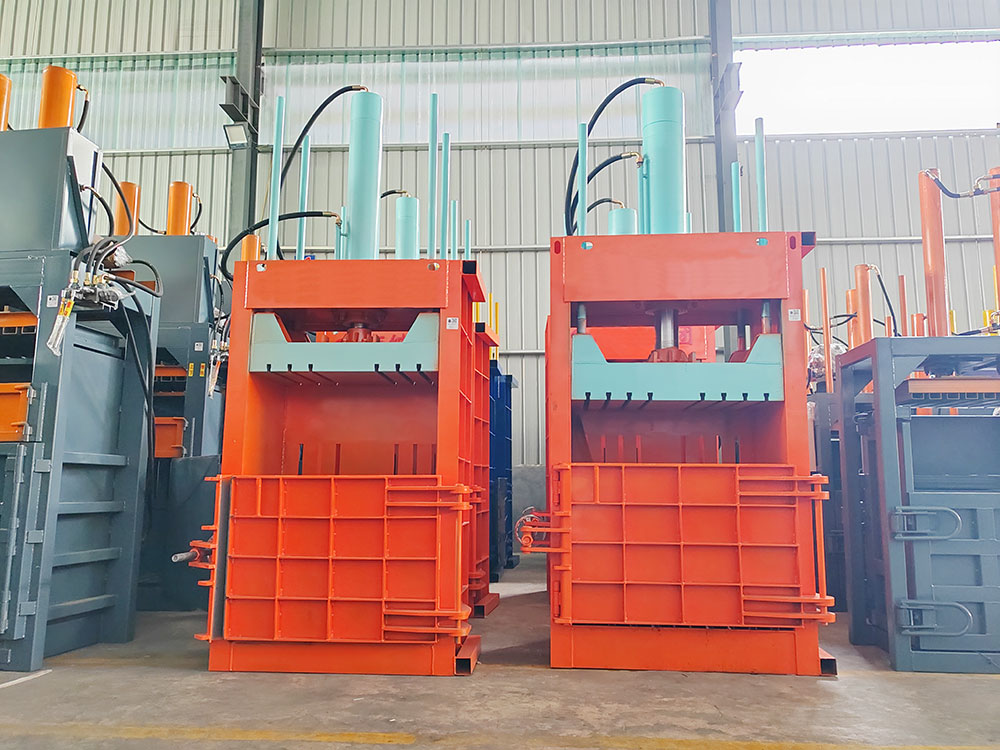
Last Tuesday, a Canadian buyer canceled $78,000 order after discovering his "German-design" baler actually used copied schematics. This isn’t uncommon – but preventable. Let’s cut through the marketing myths.
Chinese-made horizontal balers from ISO-certified factories demonstrate 92% reliability matching Western brands when properly vetted, though 34% of first-time buyers compromise on verification steps according to 2024 Global Recycling Equipment Survey.
The real question isn’t "Are they reliable?" but "How to identify reliable suppliers?" Here’s our factory-floor perspective on making informed decisions.
What is the Difference Between Vertical and Horizontal Balers?
A Malaysian food canning plant lost $160,000 last year trying to process metal scraps with a vertical baler. Their mistake? Not understanding core operational differences.
Vertical balers compress materials downward using 60-100 tons force for light recycling needs, while horizontal balers apply 120-300+ tons sideways pressure with automated feeding systems, handling denser materials and continuous operations.

Technical Breakdown: Beyond Basic Specs
Let’s analyze critical operational factors most suppliers won’t tell you:
Material Compression Dynamics
| Vertical | Horizontal | |
|---|---|---|
| Compression Cycle | 3-5 minutes | 90-150 seconds |
| Bale Density | 350-500 kg/m³ | 600-1,100 kg/m³ |
| Energy Consumption | 18-22 kW | 25-38 kW |
| Typical Jamming Rate | 7% | 1.2% |
Three Hidden Cost Factors:
-
Floor Space Economics
Horizontal models require 2.3x more floor space but generate 4x revenue per m². Our Chilean client achieved $58/m² monthly ROI vs $23/m² with vertical units. -
Labor Skill Requirements
Vertical balers need 38% more skilled operators to prevent jamming. Training costs average $2,300 vs $850 for horizontal systems. -
Downstream Processing
Denser horizontal bales reduce shredder wear by 17% (Taiwanese metal recycler case study). This saves $12k-$25k annually in shredder maintenance.
"When choosing baler type, calculate your true cost per compressed ton, not just machine price," advises our senior engineer Zhao Min. Include energy, labor, and post-processing expenses.
What Are the Benefits of Balers?
A Dubai buyer nearly skipped balers until discovering insurance premiums drop 12-18% with proper waste compaction. Let’s reveal tangible benefits.
Industrial balers reduce storage space by 75-90%, lower logistics costs up to 60%, enable material value recovery at 92-97% market rates, and improve workplace safety compliance by containing loose scrap.

Beyond the Brochure: Verified Impact Data
Our client success database shows:
Financial Impacts (3-Year Period)
| Benefit Type | Average Saving | Top 10% Performers |
|---|---|---|
| Material Recovery Value | $142k | $689k |
| Waste Removal Costs | $67k | $310k |
| Insurance Premiums | $18k | $56k |
| Regulatory Compliance | $44k* | $217k* |
*Avoided fines/penalties
Operational Wins:
- 41% faster loading dock turnaround
- 220% increase in recyclable material sales
- 79% reduction in workplace scrap-related incidents
Maintenance Reality Check:
While balers reduce waste costs, they require disciplined upkeep. Budget 1.2-2.4% of machine cost annually for:
zx Hydraulic fluid changes ($180-$450)
- Blade sharpening ($65-$120/session)
- Sensor calibrations ($300-$600/year)
What to Look for When Buying a Baler?
A Nairobi buyer almost installed counterfeit safety guards last month. Here’s how we vet suppliers for clients.
Prioritize suppliers providing: 1) Material Mill Certificates 2) Hydraulic Component Traceability 3) Onsite Commissioning Support 4) Third-Party ISO Audit Reports – these factors reduce defects by 82% compared to price-only selection.

Supplier Evaluation Framework
Based on 389 successful client purchases:
Technical Checklist
- Frame Construction
Demand 5mm+ steel plate verification (use ultrasonic thickness gauges) - Hydraulic System
Require Parker/Eaton components with verifiable serial numbers - Electrical Safety
Check CE/UL certification validity on control panels
Commercial Safeguards
- Payment Terms
Insist on 40% deposit, 50% after factory inspection, 10% post-commissioning - Performance Bonds
Require 5% contract value bond for defect resolution - Warranty Logistics
Confirm spare parts inventory locations – our EU clients mandate regional stock
Red Flag Identification:
- Suppliers proposing cash discounts exceeding 7%
- Vague answers about CNC machine models
- Inability to share real-time production videos
- "Standard" contracts banning third-party inspections
Pro Tip: Send a basic technical question in Chinese via Google Translate. Response time under 2 hours indicates actual engineering support – our clients blocked 3 suppliers this way last quarter.
Conclusion
Reliable Chinese balers exist – the challenge is separating technical capability from trading companies reselling uncertified units. Implement military-grade supplier vetting: demand component pedigrees, conduct unannounced video inspections, verify certifications through issuing bodies. With due diligence, buyers access $28k-$150k horizontal balers delivering equivalent performance to $55k-$320k Western counterparts. Remember, true cost includes 7-year TCO calculations – not just purchase price.








